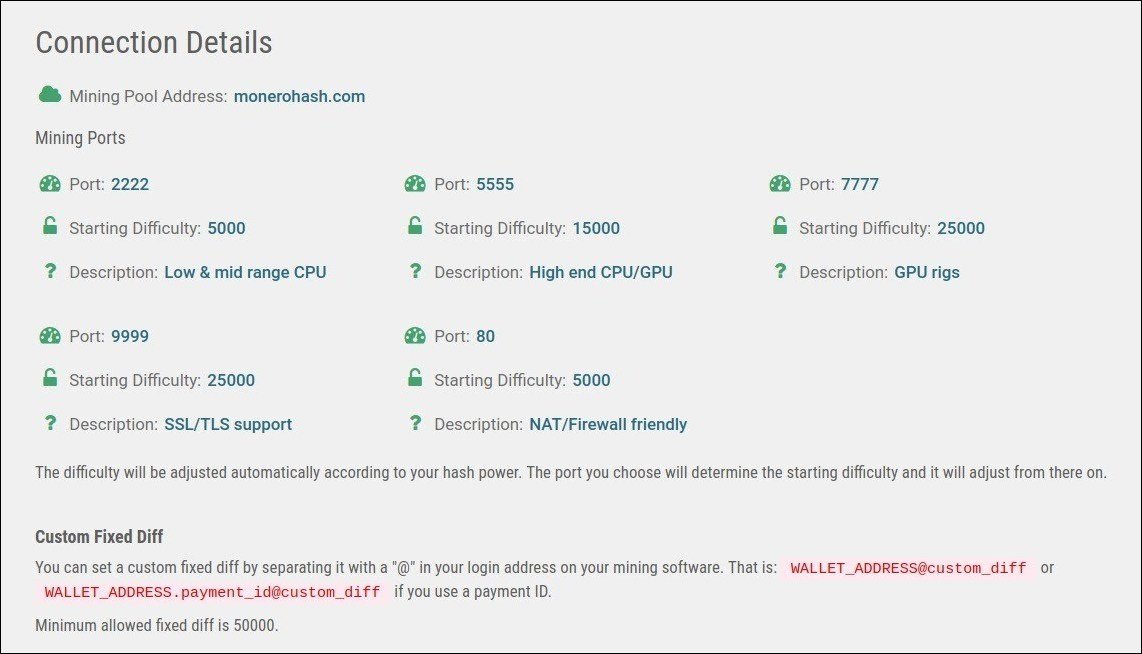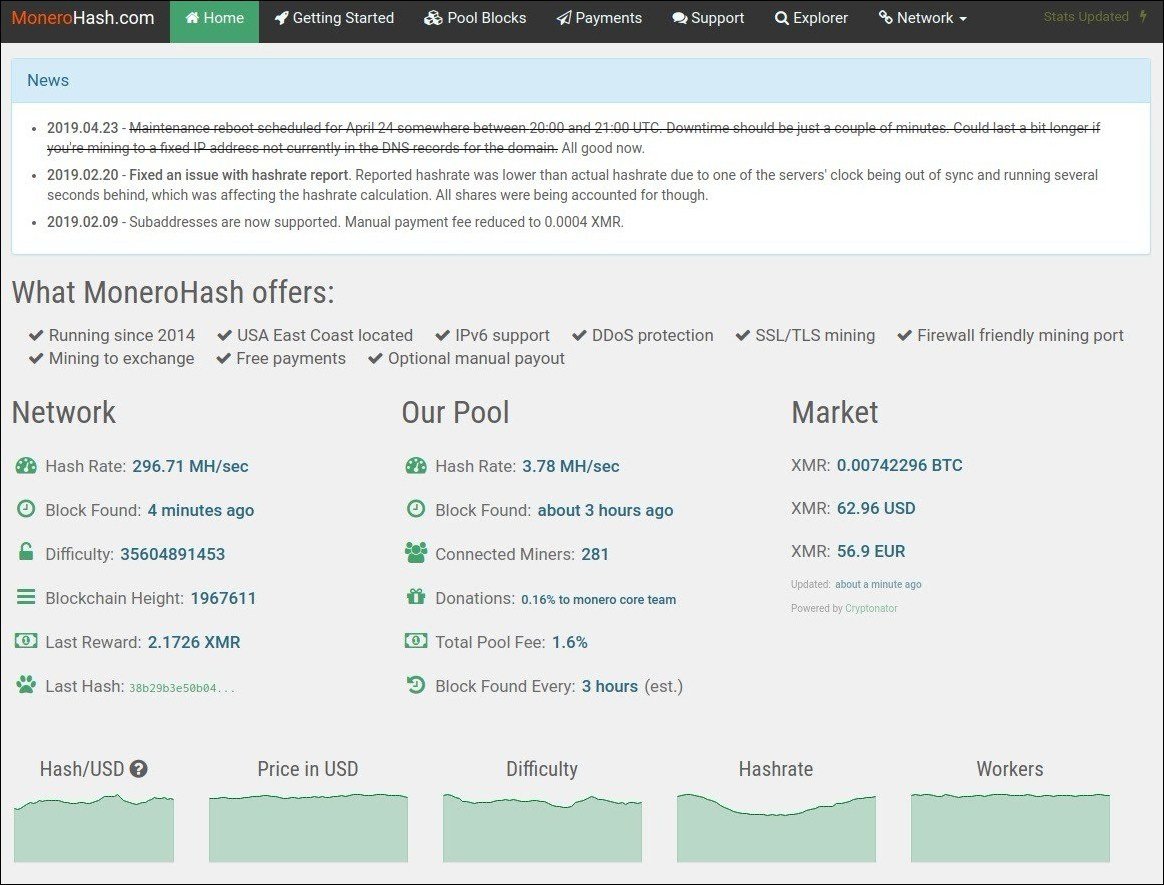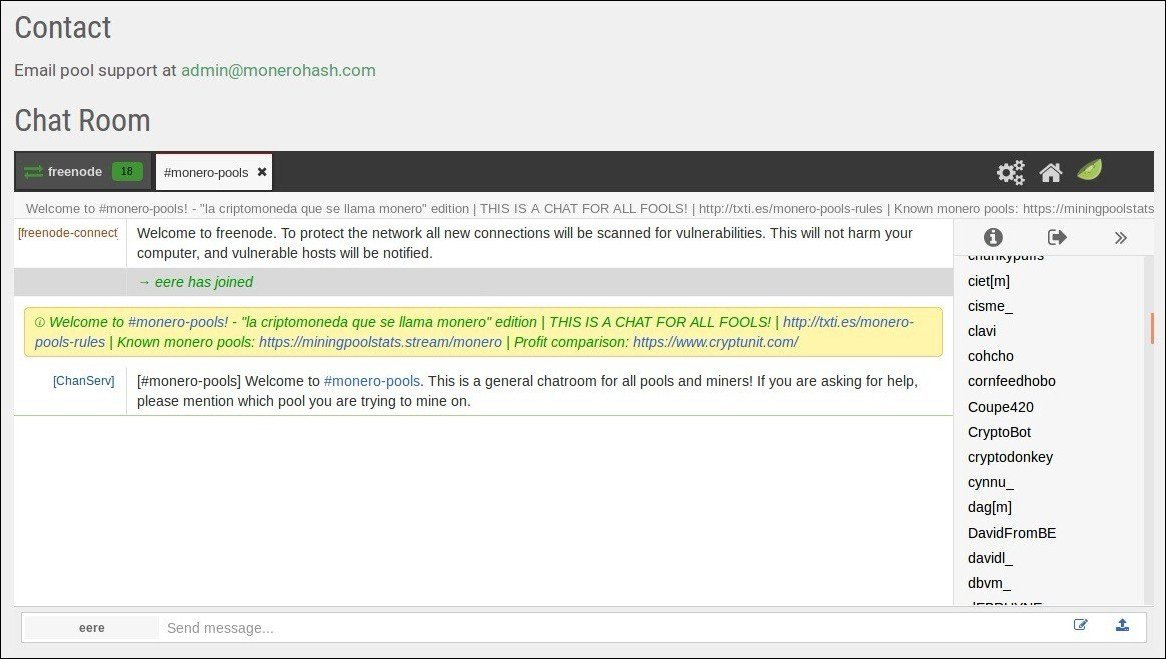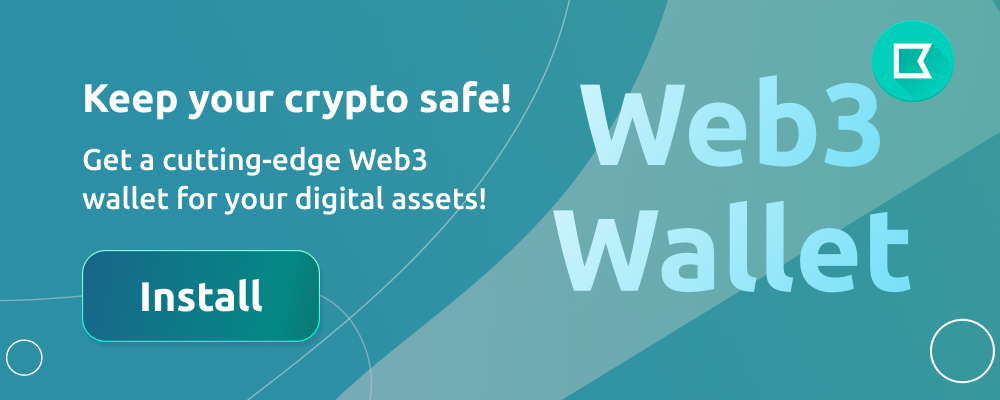

Monerohash Review 2021 - Is It Safe?
MoneroHash is a small US-based mining pool created for mining the only cryptocurrency — Monero (XMR). As Monero has a strong community of supporters, there are many mining pools similar to MoneroHash. Nevertheless, this pool has managed to maintain its activity for years and is still one of the places to go for those who want to mine Monero. Since 2014 the pool is successfully run by a single person.
Is Monerohash safe? Should you really use this mining pool? Let's find out.
Main Features
The pool supports numerous mining apps compatible with both CPU and GPU (NVIDIA or AMD) mining. There are CPUminer, XMR-stak, XMRig, XMRig-NVIDIA, XMRig-AMD, Cast XMR, SRBMiner among these apps.
MoneroHash provides 5 ports with different initial difficulty which gets adjusted automatically in the process of mining. Moreover, the miners may set custom difficulty. The minimum custom difficulty is 50,000. It can fit only the users with the most powerful equipment to maximize the results.

One of the best features of this pool is the wide opportunities of choosing the wallet to which all the mined coins are withdrawn every 24 hours. MoneroHash miners are free to withdraw their funds to the wallet addresses associated with their accounts on the exchanges. It's understood that besides wallets on exchanges, miners may use any other wallet addresses. If the daily threshold is reached, all the rewards are withdrawn to a specified wallet address automatically every day.
As MoneroHash is a small pool, it takes longer for miners to find a new block and receive the reward. At the same time, it means that the reward will be split between the smaller number of miners. So each one will have a bigger reward compared to rewards people get on larger mining pools. On the MoneroHash website, one can read the text reminding that choosing the smaller mining pools improves the system health, meaning that the big amount of independent mining pools increases decentralization hence safety of the network.
Fees & Thresholds
The pool fee is 1.6%. 10% of the collected fees go to the developers of the project. The minimum daily payout is set to 0.5XMR. The miners using any not standard address cannot withdraw less than 5 XMR per day. It needs to be mentioned that despite having to pay the fee, mining is still very profitable, so with a high probability, you will pay back your investments.

The Website Structure
As for the beginners, the pool GUI might seem them a little bit unintuitive. The design is quite basic and those who understand what to do won't be distracted by anything. Those who have zero experience in mining will have to learn some ABCs first. Probably the simplicity of the interface might play a positive role in it. There's a support email address available for queries, but probably it would be easier to find the needed info on the web.
The website has a horizontal menu line at the top of the window. It has the following sections: Home, Getting Started, Pool Blocks. Payments, Support, Explorer, and Network.

The homepage tab provides the latest news and the statistical data of the mining pool (the network and the pool hashrates, info about the latest block, difficulty, the number of connected miners, market prices, and so on). Also, on the homepage, there is a profit calculator and the user's payment and stats history.
The Getting Started page provides all the important info on ports, compatible mining apps, the use of wallet and payment IDs, and details on receiving rewards. The visitation of this page and careful reading of all the info provided there is extremely important for all potential users of MoneroHash.
The Pool Blocks tab shows the box with all the data related to the blocks found by the pool miners. At the top, there are the amount of all mined blocks and the maturity depth requirement. Below there is a table displaying the block height, maturity, difficulty, hash, time stamp, and shares/difficulty percentage.
The Payments tab provides the number of payments between the pool and the miners, the withdrawal threshold, and the denomination unit. Besides these numbers, there is a table where one can learn the info about the payments (the time when the coins were sent, the mixin amount (it is set to be 10), transaction hash, the amount of XMR, and the number of payees).
The Support tab contains an email address that can be used for queries and a freenode chat where one can communicate with users of Monero mining pools without registration.

The Explorer tab takes one to the Monero block explorer. That's where it is possible to find a transaction using the block height, a hash, encrypted payment ID, or some other data.
The Network tab has two different pages in the pop-up menu: Hashrate distribution and Nodes distribution. In the Hashrate distribution tab, we can learn details on how decentralized the network is at the current moment. It displays the percentage of hashrate incoming from different mining pools. At the bottom of the page, there's a list of the Monero mining pools. The Nodes distribution tab shows the latest data on the geographical distribution of nodes and the relevant total amount of nodes. Under the world map showing the nodes' location, there's a list of countries with the number of nodes in these countries. This info reflects the current state of the Monero network.

Is MoneroHash Safe?
Right at the top of the homepage of the pool website, there are all important news and updates. So miners can learn if the pool is going to close for some period of time due to maintenance or something else is changing — all these things are available for any visitor. It makes the platform quite transparent and convenient. The website has DDoS protection.
Yes, mined 1 xmr finally. Thank you MoneroHash. pic.twitter.com/ALEdOigCdX
— §banjroto ⚡️stacking sats (@banjroto) January 31, 2018
A person behind the pool seems to be responsive and can be contacted on Reddit. His username is o--sensei (of course, it's better to reach him out via the email address that can be found in the Support tab).
The overall feedback about MoneroHash that can be found around the Internet is quite positive and to date, there are no signs of malicious activity coming from the pool as well as there are no accounts of serious security breaches. There are no reasons to allege that MoneroHash is a scam. This is actually a very good point especially compared to what happened to some of the crypto projects in the last year.
Conclusion
Monerohash seems to be a convenient and reliable mining pool for Monero admirers. Even though in 2020 there are a lot of different mining pools available, you can still use it and probably make decent profits.

I am aware of the possibilities of this mining pool, and I did mining occasionally but I'm observing the difficulties with the pool at that moment. I've read some reviews and feedbacks and I realized that I'm not alone. I was trying to contact the support and ask them about the whole situation but the website is out of work. The black page and error, that's what I see when I open the page.
I believe, that the fee is unreasonable high for that service. I would accept they if I can gain some benefits, but there aren't any. It just takes a big fee for a long waiting and not so friendly service. I wish I could have better.




